Cuts
Ready to elevate your beef preparation skills? Dive into our expert tips and guidance to discover pointers in selecting, preparing, and serving mouthwatering beef that will impress everyone at your next mealtime.
There are many choices when considering and purchasing beef. Our tips on grass-finished versus grain-finished, beef grades and how processes, such as dry aging and marinades affect flavor when cooking will help you make an informed purchase at the grocery store.
You’ve likely seen various labels showing that beef is “natural” or “grass fed.” But what do these labels mean? All cattle spend a majority of their lives eating grass on pastures. But beef can be finished in a variety of ways, giving you choices when at the meat case in your local grocery store or at a restaurant.
What's the difference? Let’s explore various beef choices including grass-finished and grain- finished beef as well as other popular labels. For additional information on the nutrient content of the different beef choices, download this infographic.
Grass-Finished
Did you know? Grass-finished cattle spend their entire lives grazing and eating from pastures. These cattle may also eat forage, hay or silage at the feedyard. As well, grass finished cattle may or may not be given FDA-approved antibiotics to treat, prevent or control disease and/or growth-promoting hormones.
Grain-Finished
Grain-finished cattle, like grass finished, spend the majority of their lives eating grass and forage in pastures. When beef is grain-finished, cattle are free to eat a balanced diet of grain, local feed ingredients, like potato hulls or sugar beets, and hay or forage at the feedyard. Similarly, grain-finished cattle may or may not be given FDA-approved antibiotics to treat, prevent or control disease and/or growth-promoting hormones.
What do grass & grain-finished beef have in common?
- Both have an excellent source of 10 essential nutrients to fuel busy, active lifestyles.
- Beef is the foundation of a healthy balanced diet.
- Both grass or grain-finished beef are rich sources of lean quality protein, with a variety of wholesome beef choices for your lifestyle.
CERTIFIED ORGANIC
Certified organic beef, designated by the official label, comes from cattle that have never received any antibiotics or growth-promoting hormones. These cattle may be spend time at the feedyard and can be either grass-finished or grain-finished as long as the USDA’s Agriculture Marketing Service certifies the feed as 100% organically grown.
NATURALLY RAISED
Naturally raised beef comes from cattle that have never received antibiotics or growth-promoting hormones. This beef may spend time at a feedyard and can be either grain-finished or grass-finished.
Beef grading sets the standards for the various quality levels of beef. The beef grading program uses highly trained specialists and sometimes grading instruments to determine the official quality grade. Beef quality grading is voluntary and administered by the USDA and paid for by beef packers.
The grade is primarily determined by the degree of marbling — the small flecks of fat within the beef muscle. Marbling provides flavor, tenderness and juiciness to beef and improves overall palatability. Other grading factors include animal age, and color and texture of the muscle.
Let's explore the different beef grades.
Prime
Prime beef is produced from young, well-fed cattle. It has abundant marbling, is produced in smaller quantities than other grades, and is often sold in hotels and restaurants. Prime roasts and steaks are excellent for roasting, grilling or broiling.
Choice
Choice beef is high quality and produced in highest quantity, but has less marbling than Prime. Choice roasts and steaks, especially from the rib and loin, will be very tender, juicy and flavorful. They are suited for roasting, grilling and broiling. Less tender cuts are perfect for slow-cooking.
Select
Understanding the Label:
At the supermarket meat case, each beef package label typically identifies the primal cut and the sub-primal cut name. It also includes the weight, price per pound, total price, sell-by date and safe handling instructions. It may also include a grade, nutrition and preparation information and the country of origin.
Ground Beef Label:
What to look for:
- Select beef with a bright cherry-red color. Beef in a sealed bag typically has a darker purplish-red color. When exposed to the air, it will turn a bright red.
- Choose beef that is firm to the touch.
- Make sure the package is cold with no holes or tears.
- Choose packages without excessive liquid.
- Purchase beef on or before the sell-by date.
Beef aging does not pertain to the age of the cattle but instead refers to the amount of time the meat has been stored and refrigerated after slaughter. Aging beef involves storing meat at refrigerated temperatures to enhance tenderness and flavor.
There are two choices for aging beef, wet and dry aging. Let’s explore the two methods.
Wet Aging
Wet aging includes storing meat in sealed airtight bags under refrigeration (32°F to 34°F) up to 3 weeks. Wet aging results in traditional beef flavor and is the most common aging method.
Dry Aging
Most cuts taste great with just a pinch of salt and pepper, but take your steak or roast to new flavor heights with a marinade or rub. Use our marinade and rub tips and recipes to help take your next meal to another level.
Marinade Quick Tips:
There are two reasons you might want to use a marinade: to help add flavor or to tenderize. While the two different types of marinades may contain similar ingredients, the key is the length of marinating time. If you’re just looking to add flavor, you only need to marinate for 15 minutes to 2 hours. If you’re looking to tenderize cuts, you’ll want to marinate for 6 to 24 hours.
- When marinating beef, always marinate in the refrigerator, never at room temperature.
- Allow 1/4 to 1/2 cup of marinade for every pound of beef.
- Marinate in a food-safe plastic bag or in a non-reactive container such as glass or plastic. Turn or stir the beef occasionally to allow even exposure to the marinade.
- Before cooking, remove beef from marinade and pat dry with a paper towel to promote even browning and prevent steaming.
- If a marinade is to be used for basting or as a sauce, reserve a portion of it before adding to the beef. Marinade that has been in contact with uncooked meat must be brought to a full rolling boil for at least one minute before it can be used for basting or as a sauce.
Tantalizing Marinades to Try:
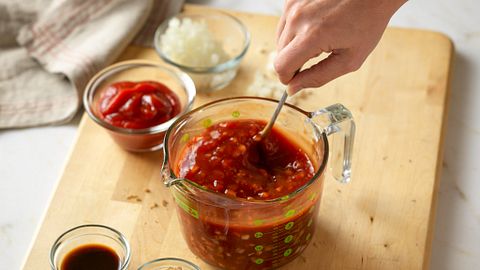
Cowboy Barbecue Marinade & Sauce
Thinking barbecue? Look no further than a few simple pantry items. Enjoy it on your next steak.
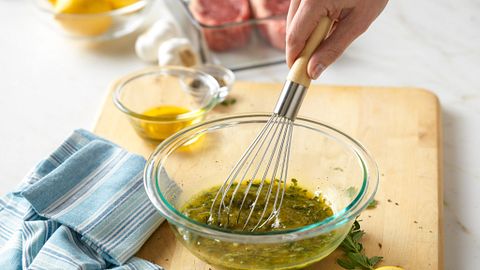
Lemon-Oregano Steak Marinade
Whip up this simple and flavor-packed lemon, garlic and fresh oregano marinade in minutes.
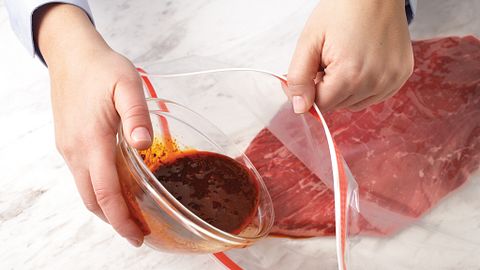
Balsamic-Mustard Marinade
One of the easiest marinades around with two common ingredients: Dijon and balsamic vinaigrette.
Rub Quick Tips:
Steak rubs and roast beef rubs are seasoning blends applied to the surface of beef like roasts, steaks and burgers. These quick mixtures add flavor to beef, but do not tenderize.
- Dry rubs consist of herbs, spices and other dry seasonings.
- Paste-type rubs, which are perfect for roasts, contain small amounts of wet ingredients, such as oil, crushed garlic or mustard.
- Rubs can be applied just before cooking or up to 2 hours in advance and refrigerated until cooking time.
- Simply combine the ingredients and apply evenly to all surfaces. Cook beef to desired doneness.
Robust Rubs for Perfect Beef
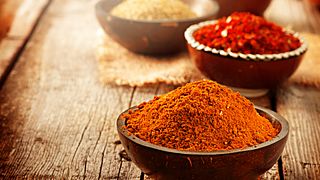
COWBOY STEAK & ROAST RUB
Have your steak taste like you're on the open range with this Cowboy Steak and Roast Rub.
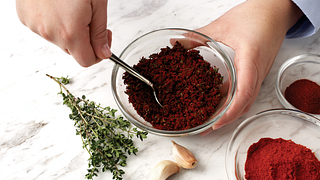
GARLIC-THYME RUB
Thyme, sweet paprika, garlic and ground red pepper provide just the right amount of spice to steak.
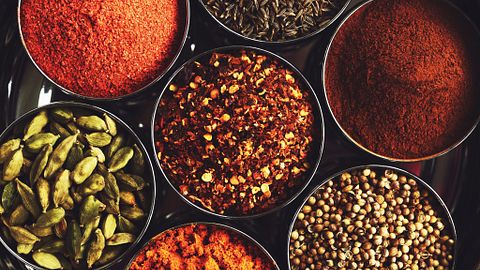
discover more rubs
Looking for big flavor and minimal effort? Want to customize your next steak on the grill? See more of our rub recipes.

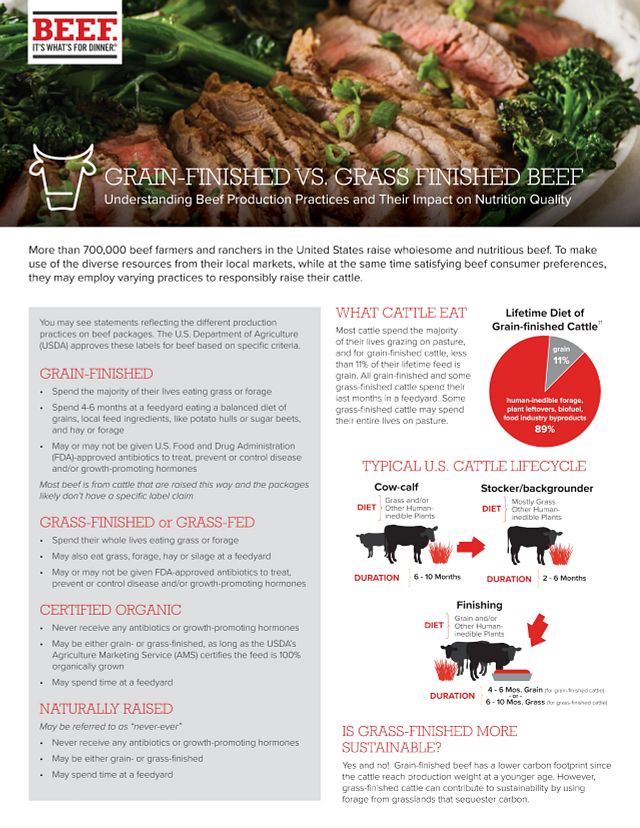

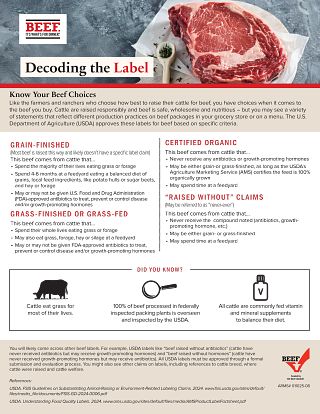
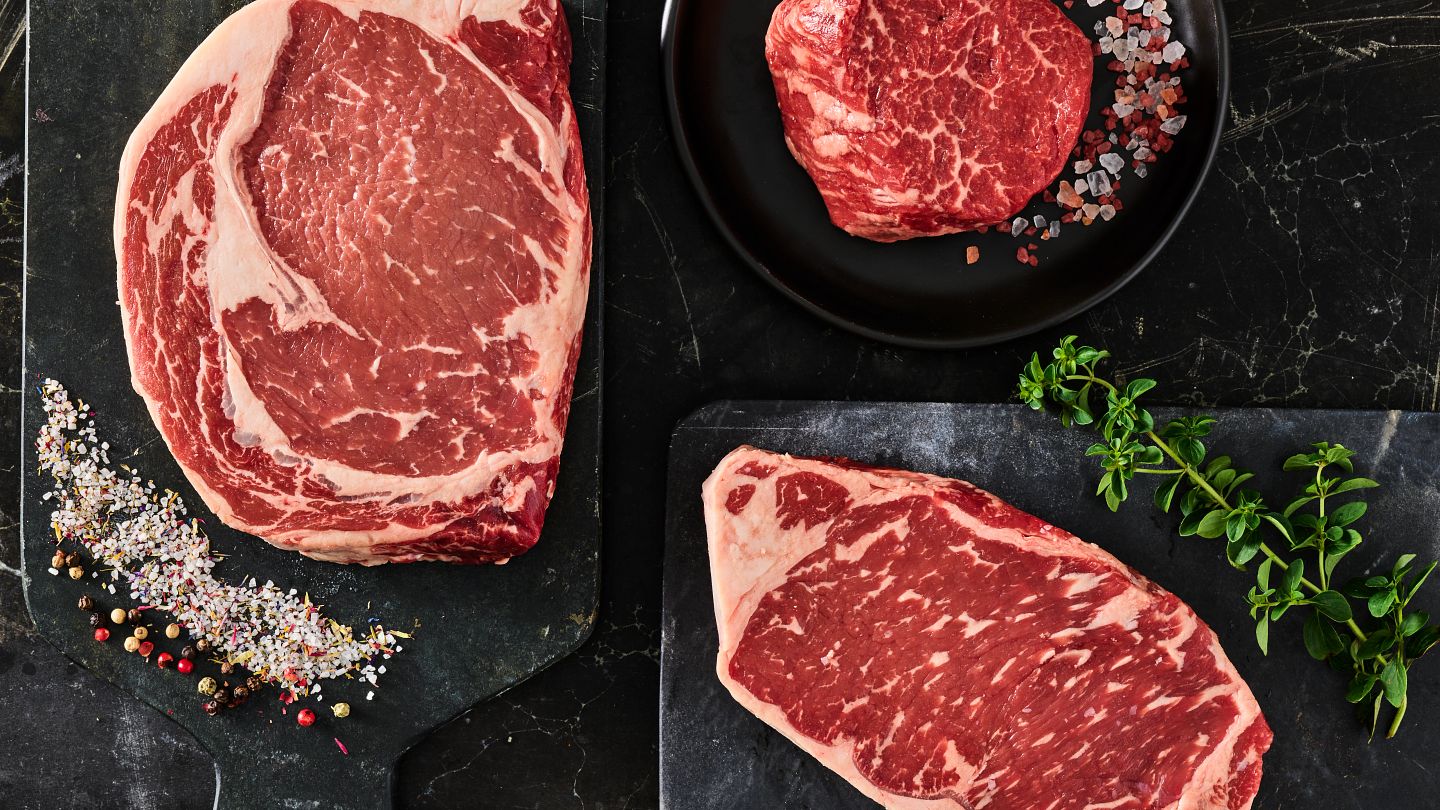


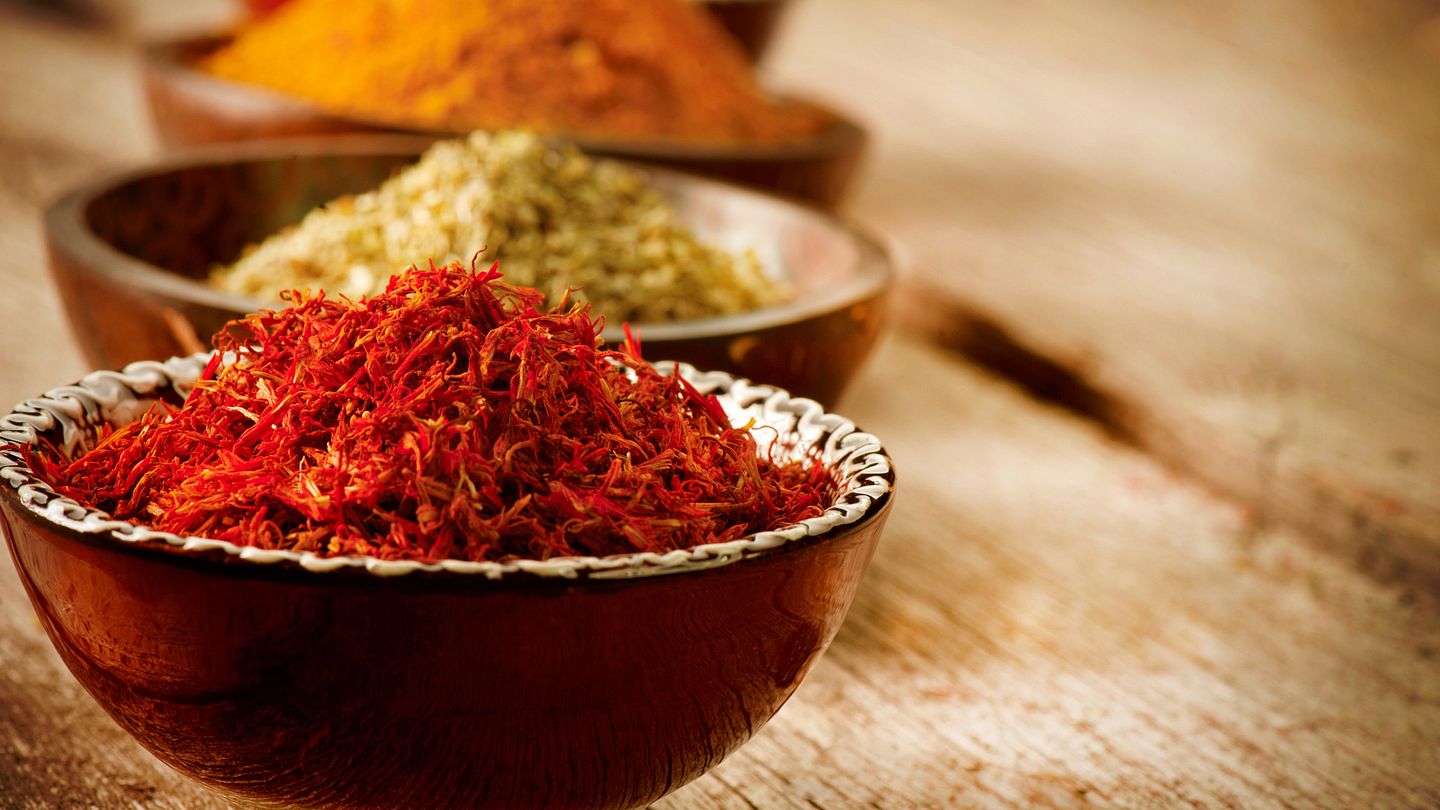
Share This Page